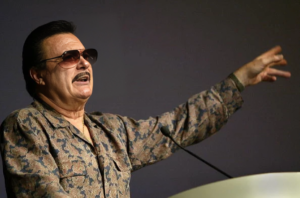The Iconic Writer of Some of the Greatest Novels, Ernest Hemingway
In Shorts:
- Ernest Hemingway, born in 1899, was one of the most influential American writers of the 20th century.
- World War I shaped Hemingway’s writing. His wartime experiences in the Red Cross ambulance corps influenced many of his famous works.
- In the 1920s, Hemingway met F. Scott Fitzgerald and developed his minimalist writing style in Paris. His brilliant literary career began here.
- Hemingway’s 1952 novella, “The Old Man and the Sea,” helped him win the 1954 Nobel Prize in Literature, cementing his standing as a master writer.
- Hemingway struggled with melancholy and health after his writing fame. His struggle ended in 1961 with his suicide at 61, leaving a legacy in American writing.
Ernest Hemingway was among the most well-known and significant American writers of the 20th century. His semi-autobiographical books and short stories significantly influenced 20th-century fiction, and he led an exciting life. He is renowned for describing tough, manly subjects in his minimalist writing style. Let’s examine a few of his most well-known and excellent books from the past.
Ernest Hemingway Profile Details
| Name | Ernest Hemingway |
| DOB | July 21, 1899 |
| Place Of Birth | Oak Park, Illinois |
| Father | Clarence E. Hemingway |
| School | Attended public school in Oak Park |
| Mother | Grace Hall Hemingway |
| Nationality | American |
| Best Seller | A Farewell to Arms |
| Pulitzer Prize | The Old Man and the Sea won the Pulitzer Prize in 1953 |
| Noble Prize | Awarded Nobel Prize for Literature in 1954 |
| Died | Suicide on July 2, 1961 |
Childhood of Ernest Hemingway
Ernest Hemingway was born in Illinois in 1899. He was early appreciative of the great outdoors and learned hunting and fishing techniques from his father. He started writing articles for the school newspaper and yearbook in high school. After graduating in 1917, he worked as a journalist before deciding to enlist in the Red Cross ambulance service and fight in World War I. Though it severely damaged him, this event was a major inspiration for much of his subsequent writing.
How He Become a Great Writer?
After the war, Hemingway lived in Paris. He befriended “Lost Generation” writers like F. Scott Fitzgerald. Paris was where he met his first wife, Hadley Richardson. His writing career took off in Paris in the 1920s, when American periodicals published his poetry and short fiction. He published Three Stories and Ten Poems in Paris in 1923. His novels, notably The Sun Also Rises, A Farewell to Arms, and several short story collections, made him one of the best authors of the next decade. In the 1930s and 1940s, Hemingway penned For Whom the Bell Tolls and To Have and Have Not from his travels. He was one of the world’s best-living novelists by 1950. Hemingway won the 1954 Literature Nobel. His 1952 novella The Old Man and the Sea earned him this distinction.
Subsequent Life and Demise
Hemingway saw a decrease in his health and depression in his later years. He was treated for depression at the Mayo Clinic for some time before committing suicide at the age of 61 in his Idaho home in 1961. In 1964, the autobiography A Moveable Feast was released posthumously. The novel he worked on in the 1950s, Islands in the Stream, was published in 1970, following his passing.
Ernest Hemingway: Most Notable Works
Ernest Hemingway earned his place in American literature and journalism. The Oak Park, Illinois-born author shaped 20th-century American fiction and culture. The harsh battles of the first half of the 20th century, such as World War One and the Spanish Civil War, changed his life and affected many of his books and short stories. Ernest Hemingway wrote many classics, including A Farewell to Arms (1929), For Whom the Bell Tolls (1940), and The Old Man and the Sea (1952). Hemingway shot himself with a double-barreled shotgun on July 2, 1961. In his final years, the 61-year-old author battled depression, high blood pressure, and liver illness.
He started developing his skills early.
From his mid-teens, Hemingway honed his journalistic and writing skills. He was active in Trapeze and Tabula, his high school newspaper. The sports section featured his writing for two years, sometimes under Ring Lardner Jr. From his mid-teens, Hemingway honed his journalistic and writing skills. He was active in Trapeze and Tabula, his high school newspaper. The sports section featured his writing for two years, sometimes under Ring Lardner Jr. He became a Kansas City Star journalist after high school. He worked at the newspaper from mid-autumn 1917 to spring 1918.
Hemingway won the Italian Silver Medal of Bravery.
Hemingway volunteered as an Italian Army ambulance driver during World War One. He faced horrific and dangerous conditions on the Italian front. He defined himself by saving two Italian soldiers. This humanitarian act earned him the Italian Silver Medal of Bravery. He was hit by mortar fire shortly earlier. His machine-gun wounds were life-threatening. The young writer was brought to a Milan military hospital and operated on for shrapnel wounds. Six months were spent in the hospital in recovery.
Hemingway’s Best-Selling Books
During his over 40-year career, Hemingway published several hugely successful books, some now regarded as masterpieces of American literature.
To introduce you to his impressive body of work, let’s look at ten of his best and most suggested novels:
- The Sun Comes Up Too (1926) Acclaimed as the ultimate Lost Age book, it depicts the despair that Hemingway’s age felt following World War I as they journey through Paris and Pamplona, alternating between drinking, partying, and bullfights.
- Adieu to Armas (1929) is one of the best war books ever written. It is the heartbreaking tale of the love between an English nurse and an American ambulance driver on the Italian front during World War I.
- 1940’s For Whom the Bell Tolls: This novel, which follows an American dynamite fighting with guerrilla forces, addresses death, duty, and the political ideas fueling the war. It was inspired by the author’s journalism experience during the Spanish Civil War.
- 1952’s The Old Man and the Sea: This incredibly well-known book explores humanity and tenacity via the eyes of an elderly Cuban fisherman engaged in a titanic struggle at sea with a massive marlin.
- A Transient Feast (1964): This posthumous memoir, published after Hemingway’s passing, describes his early difficult years as a writer in Paris in the 1920s when well-known literary ex-pats surrounded him.
- 1970’s Islands in the Stream, this enormous novel, which was released posthumously, weaves together stories from the life of a painter in Bimini, his sorrow over the murder of his son during the war, and his desperate search for German U-boat survivors.
- In 1926, The Torrents of Spring: In addition to ridiculing the pretenses he observed in other well-known writers of the era, this early humorous novella assisted Hemingway in severing his relationship with his first publisher, Boni & Liveright.
- In 1937, To Have and Not Have was published. This novel, inspired by his experiences in Key West during the Great Depression, tells the story of a fishing boat captain who, to make ends meet, turns to smuggle contraband between Florida and Cuba.
- In the Woods and Over the River (1950): This contentious book, set in post-war Venice, tells the tale of an American colonel devastated by war who returns to see his young Italian girlfriend. It tackles themes of love, regret, and accepting death.
- Winner Take Nothing, 1933 In contrast to Hemingway’s novels, this collection of short stories explores darker topics such as disappointment, misery, despair, and death through its fourteen works.
Please note: In 1960, Hemingway moved from Cuba to Ketchum, Idaho, after 20 years. He continued employment in his new home but was hospitalized twice at the Mayo Clinic for melancholy and anxiety. On July 2, 1961, the great writer shot himself with a shotgun. His corpse was located in his Ketchum home.
In summary
Hemingway referred to his writing style as “The Iceberg Theory.” It was economical and empathetic, making it popular in writing and literature and affecting 20th-century fiction. Hemingway composed most of his works between the middle of the 1920s and the middle of the 1950s, for which he was awarded the 1950 Nobel Prize in Literature. He authored two nonfiction works, nonfiction short stories, and seven novels. Three novels, three nonfiction volumes, and nonfiction collections of short stories were published following his passing. He is the author of several American literary classics. His works, public persona, and adventurous lifestyle won him the admiration of later generations.
Highly competent, Ernest Hemingway’s creations were precise and near-perfect. He was one of the few 20th-century notable novelists. The author’s writings are still popular. The virile air this writer created in his works let readers feel excitement, terror, and bravery like he did during battle, bullfighting, and hunting. Hemingway’s writing and works made him famous before middle age. Even if critics support his fame, the author’s writing impact persists.
FAQ concerning Ernest Hemingway
Which literary style defines Ernest Hemingway?
Hemingway’s “Iceberg Theory” uses short sentences and little adornment to conceal deeper ideas.
Which book won Hemingway the Nobel?
The 1952 novella The Old Man and the Sea was Hemingway’s principal cause for winning the 1954 Nobel Prize for Literature.
How did Hemingway’s risky lifestyle affect his writing?
Since he traveled a lot and faced danger and anguish throughout the Spanish Civil War, World War I, and other conflicts, Hemingway’s rugged, manly writings about life and death were authentic.
Which autobiography recounts his Parisian writing struggles?
In the 1920s Paris in A Moveable Feast, Hemingway struggles financially as a young writer surrounded by great writers.
Where was Hemingway born, and what was his childhood like?
Hemingway, who grew up in Oak Park, Illinois, wanted adventure and learned to hunt and fish in rural Michigan before joining the Army at 18.

















